At first glance, modern Hong Kong actually has the feel of a big city in China. But if you pause on a street corner and listen to a few exchanges, just by ear you can sense the difference in the air. There's still a rush, but time is passing in a hundred different languages, and strolling down the street brings dozens more aromas. This variety of flavors and origins reveals part of the territory's current global identity, home to people from every country on earth.
In an historically relevant way, Hong Kong's chocolate culture is a great lens through which to see its multinational roots and understand more facts about Hong Kong— where it is & where it's headed. The European origin is obvious, while the local flavors take a bit more sleuthing. But to have a truly authentic experience in Hong Kong, you almost always need to turn to the region's food.
Click here to listen to a podcast version of this story & its interviews.
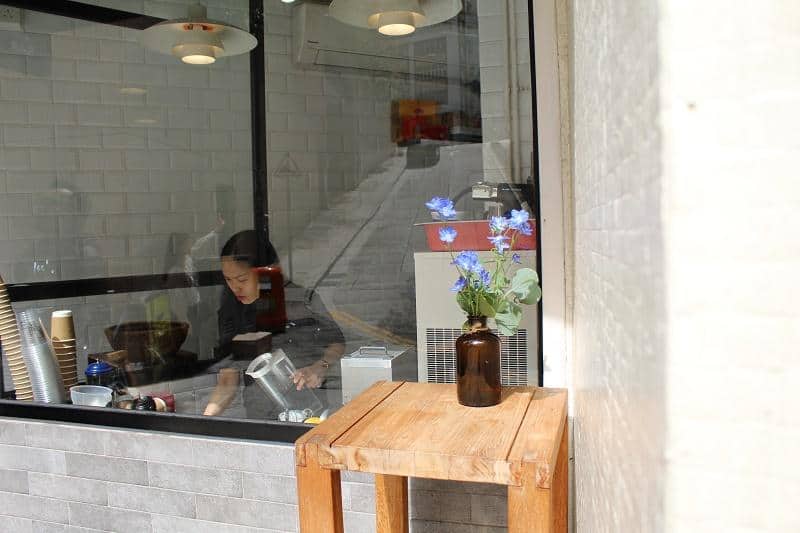
Jump To
- Setting The Scene: Hong Kong's Historic Rise
- Chocolate's History In Hong Kong
- The Most Popular Chocolates In Hong Kong
- For Hong Kong Chocolatiers, The Hotel May Not Be The Way
- Hong Kong Chocolate Flavors
- Food & Holidays In Hong Kong
- Craft Chocolate: Hong Kong Is On Its Way
- The Future Of Hong Kong Chocolate
Setting The Scene: Hong Kong's Historic Rise
During the early 19th century, Hong Kong was a sleepy fishing village, which just so happened to be located in a strategically relevant part of the Chinese Empire. On the island of Hong Kong, Brits would exchange opium for Chinese silks, silver, and non-perishables. But over the course of the latter half of the 1800's, China leased out an expanded territory of Hong Kong to the British empire. That series of treaties culminated in a 99-year lease of Hong Kong to Great Britain, which maintained control over the territory until it was "returned" to China on July 1st, 1997.
But over that time, Hong Kong became a globally important center of commerce, as well as Britain's capitol & port of trade in East Asia. Despite a significant & relatively consistent influx of Chinese immigrants to the territory, Hong Kong has developed very differently from mainland China. The New Territories region is still actually quite the haven for nature lovers, with farms and rural parts in a city notorious for its hustle and bustle.
When you visit modern Hong Kong, you'll find one of the most expensive cities in the world. If you've ever been to a big Chinese city, this seems like the London version of that, with lots of English and many dozens of languages being thrown around every street corner. Made In China is more ubiquitous than Made In Hong Kong these days. But despite technically being a part of China, Chinese goods are more common here than Chinese-born people, as visas to Hong Kong are hard to come by for mainland Chinese.
The 1997 agreement of two systems, one government has made sure of that, at least for the 50-year period following Hong Kong's return to China. In the interim, foreign imports have become all the rage, including in the chocolate industry.

Chocolate's History In Hong Kong
When Hong Kong was still a British territory, imported chocolates were out of reach for most of the public. In fact, at the time when Hong Kong was handed over to British rule, the Crown's territories in Africa were jut starting to pick up on cacao production. Decades later, even cheap chocolate coins wrapped in gold foil were a special treat only for Chinese New Year. But over the last two decades, Hong Kong has become the place for well-known European chocolatiers to open their first shop in Asia.
The number of international expats— not just from Great Britain but from every corner of the world— is significant, and tourism has picked up greatly. Both locals and visitors are looking to indulge when in this cosmopolitan center, and chocolate shops are more than happy to provide. But this has resulted in skyrocketed rent in places where chocolate makers may want to set up shop, a business deterrent stronger than most.
With relatively lenient import laws in Hong Kong— compared to mainland China and neighboring countries— there are also a number of factors pulling food businesses of all kinds into Hong Kong. This increases competition for a limited number of physical shop spaces, and has pushed business with less funding towards farmers' markets, pop-up shops, and online stores. Each of these business models has their drawbacks, but it's easy to see the appeal.
It's hard to overlook the cultural & historical pushes Hong Kongers feel towards imported chocolates. They represent luxury, uniqueness, and a special treat, even if it's just a KitKat bar from the convenience store. This idea of "a treat" is important, as well, because chocolate's main role in contemporary Hong Kong society is that of a gift.
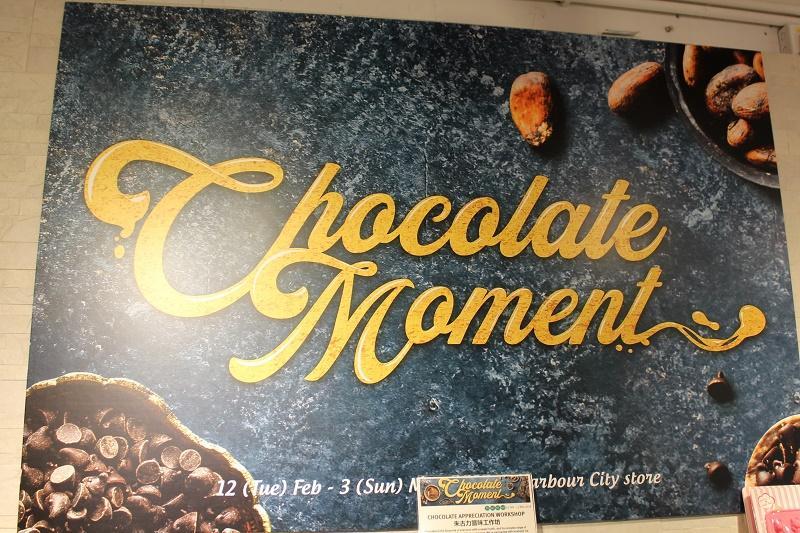
The Most Popular Chocolates In Hong Kong
At the moment, mass-produced chocolate counts for basically the entire chocolate market in HK. Pseudo-luxury chocolate brands like Ferrero Rocher (whose main ingredients are hazelnuts, sugar, palm oil, and wheat flour) are dominating because their packaging looks like a gift. It's the same story with Godiva and Lindt, marketed as luxurious alternatives to other Hong Kong favorites, such as Cadbury and Nestle. All of these are originally, unsurprisingly, European imports.
Historically, Hong Kongers have seen imported sweets of all kinds as being of higher quality than those made locally. Think back to those cheap gold coins, probably made with very little cacao. Yet there is definitely a pride for people in being able to buy something labelled "Made In Hong Kong." These days that sticker carries a very different weight from one that says "Made in China," despite the proximity.
However, the local eating movement doesn't seem to be nearly as strong in Hong Kong as it is in places like the US or the UK. For Hong Kongers, switching to local products or to bean to bar chocolate in general is a matter of health.

For Hong Kong Chocolatiers, The Hotel May Not Be The Way
When you're searching for chocolate shops in Hong Kong, most of your result will either be for online shops or hotel chocolatiers. As mentioned above, rent is so high that it's hard for young chocolate startups to raise enough funds to open up a retail store. As a result, even the "premium" end of the industry is dominated by international brands such as Jean Paul Hevin, La Maison Du Chocolat, and Venchi.
European chocolatiers often expand into HK after expanding into Japan, because both locals & tourists associate European chocolate with high quality. These are the chocolatiers whose products they've tried on travels or been gifted, and quite frankly, they're usually the only chocolates they can easily find. So they stick with them.
But for the growing portion of Hong Kongers looking to break into the chocolate scene, this means that they need tens if not hundreds of thousands of dollars in capitol to open up a physical business. On the other hand, basically all they need in order to sell online is a website and a place to store their products. Most people then visit farmers markets to spread the word about their brand, possibly building up enough buzz to open up a permanent stand in the mall.
If they're a chocolatier looking to break into the business, they either have to go the same route as above, or try to get hired at a hotel chocolaterie. But these jobs are few and far between these days, as most hotels are more excited about renting their shop space out to an established chocolate brand than going through the trouble of setting up their own. So even though Hong Kong's boutique hotels are traditionally the destination for high quality chocolate on the island, malls are an increasingly rewarding option.
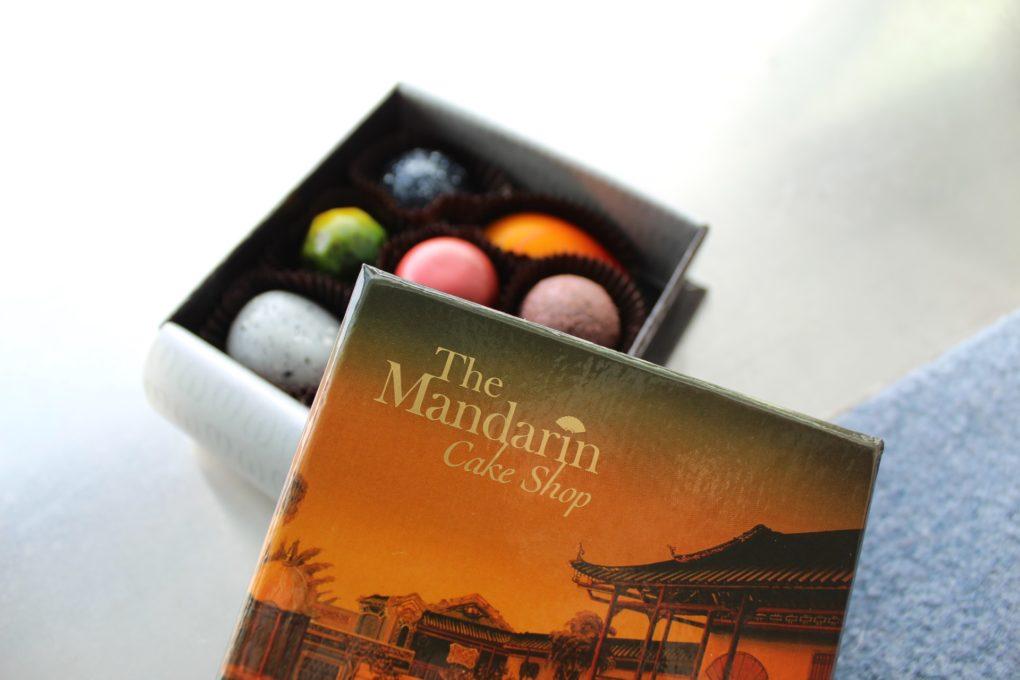
Hong Kong Chocolate Flavors
Thanks to the European heritage of Hong Kong chocolate culture, Hong Kongers are used to very classic European flavors in their bonbons. Think plain dark chocolate, praline, raspberry, and vanilla. However in chocolate bars, beyond plain dark chocolate, consumers also have a strong preference for sea salt and hazelnuts, in no small part thanks to the popularity of Ferrero Rocher.
Dark chocolates in particular are also favorites because Hong Kongers are quite health-conscious these days. The labels "sugar-free" and "no sugar added" are common refrains in sweets shops, but Hong Kong has never had much of a sweet tooth, as reflected in their tea culture adopted from both Britain and China. The famous stocking tea, adapted from Taiwan's sweet bubble tea, has a much stronger tea flavor and little or no sugar added, more often than not.
Those from mainland China are also very health-conscious, feeding even more into the health fads hitting Hong Kong. One of the few local chocolatiers working outside the constraints of a major hotel chocolate shop is Jeffery Koo. In Patisserie Jeffery Koo, some of the flavors he's found an audience with are salted kumquat, red date, and sweet vinegar. But for Koo to open his own shop a few years ago took almost two decades of training, working, and building a reputation both at home & abroad.
And rent isn't getting any cheaper.
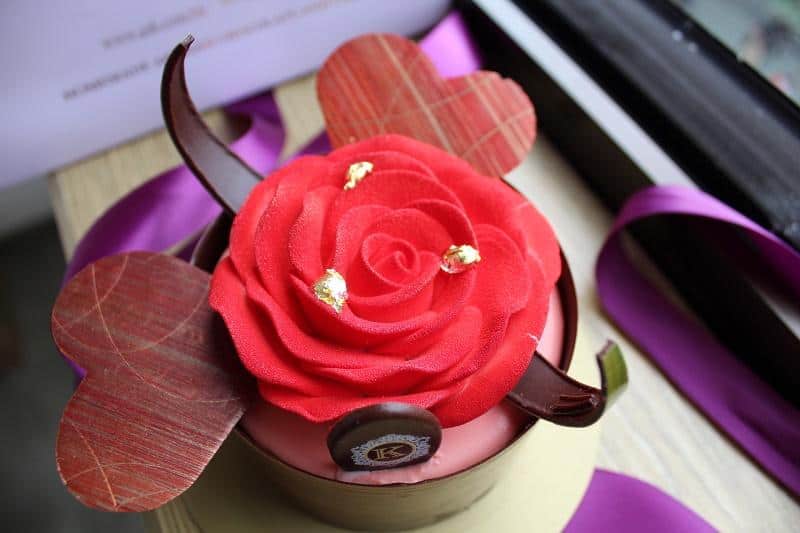
Food & Holidays In Hong Kong
Everybody I interviewed for this article was unanimous that the biggest holiday for gifts in Hong Kong was Chinese New Year, also known as Lunar New Year. The holiday is celebrated in several countries throughout Asia, including Korea, Taiwan, and Vietnam. But it's best characterized by the coming together of family and the exchange of gifts, especially food gifts.
A common treat around Chinese New Year in Hong Kong is the moon cake. Some local chocolate shops have adapted this popular treat into a chocolate version, and taken advantage of the food-centric nature of HK holidays to sell more chocolates. Packaging is elaborate and high quality, with expensive chocolates (usually imported) & cookies packaged together neatly. Gold & red are a common color scheme, as they're representative of health & wealth for the new year.
Unfortunately for chocolate shops, Chinese New Year is always around the same time as Valentine's Day, the second-biggest day for Hong Kong chocolate. Unlike in the Americas & most of Europe, Christmas and Easter aren't much of a celebration in Hong Kong due to the relatively low percentage of Christians. So in Hong Kong, chocolate holidays are relegated to the first couple months of the year, serendipitously also the coolest months.
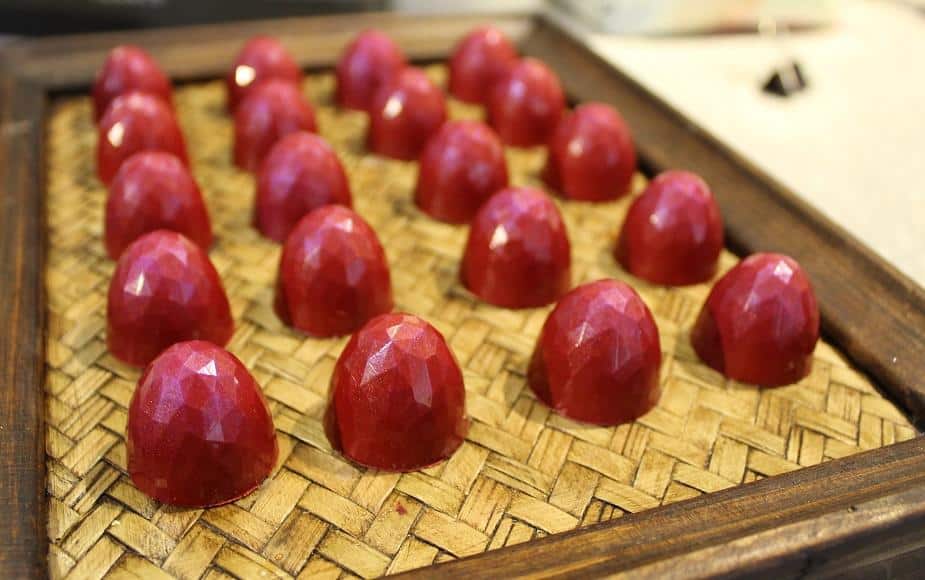
Craft Chocolate: Hong Kong Is On Its Way
At the time of publication, Hong Kong has 5 small-batch chocolate makers, only one of whom has a permanent retail location (another has a cafe with a chocolate tasting menu by reservation only). Compared to other international hubs in Asia, the territory has been much slower on the uptake for the craft chocolate movement. In part this is due to extremely high rent, but there's also a legacy of contextual consumption in connection with chocolate in general. People don't really buy chocolate for themselves, so outside of big gift-giving holidays, craft chocolate is a hard sell.
To be able to actually earn a living selling Hong Kong-made chocolate means selling 40g bars at around $10USD apiece, and catering to whatever your customers may want. Younger people, especially, take pride in the Made In Hong Kong designation for their foods. In fact the under-40 crowd seems to be the driving force behind Hong Kong bean to bar, if my hours spent at Hakawa Chocolate are any indication.
Having now a few permanent retail locations which sell international bean to bar chocolate brands is a huge step forward, as well (Sweet World & Oliver's come immediately to mind). Just the growth in selection within the city, comparing when I was there in 2017 vs. in 2019, makes a huge difference in the range of flavors & textures which people can experience. The number of people doing chocolate tasting and pairing events has more than doubled, and doesn't seem to be slowing down anytime soon.

The Future Of Hong Kong Chocolate
A country or even a city's tastes don't change overnight. I suspect that hazelnuts, and maybe other interesting inclusions people associate with healthy & clean eating, will remain popular for a long time yet. The first time I visited Hong Kong, in 2017, there was actually a chocolate maker using "raw" cacao to make flavored chocolate bars. Their operation has since shut down, but the relative popularity of their health-oriented bars has stuck with me.
There's a real opportunity for growth in the realm of less-sweet chocolates with higher percentages of cacao, even if they're more expensive. Because just as tastes won't change overnight, neither will the association of expensive chocolate with gifts. Hong Kong's craft chocolate movement will continue to grow slowly, in the dark, in small batches crafted in hillside apartments, changing minds one at a time. Even though I'd love to see a variety of makers using consistent origins & Hong Kong-inspired inclusions, that seems a long way off, for now.
Keeping sizes of chocolates small but eco-friendly could go a long way in increasing the personal consumption habit of chocolate in Hong Kong. As people like Katie Chan of The Chocolate Club HK teach in chocolate tastings & pairings, conscious consumption is key. It's when people see fine chocolate less like a junk food or gift and more as a little treat to be enjoyed in moderation, like any other, that craft chocolate will really have arrived in Hong Kong.
Even though rent won't be going down any time soon, the market share for local chocolatiers and chocolate makers has the very real possibility of going up.

















Comments
No Comments